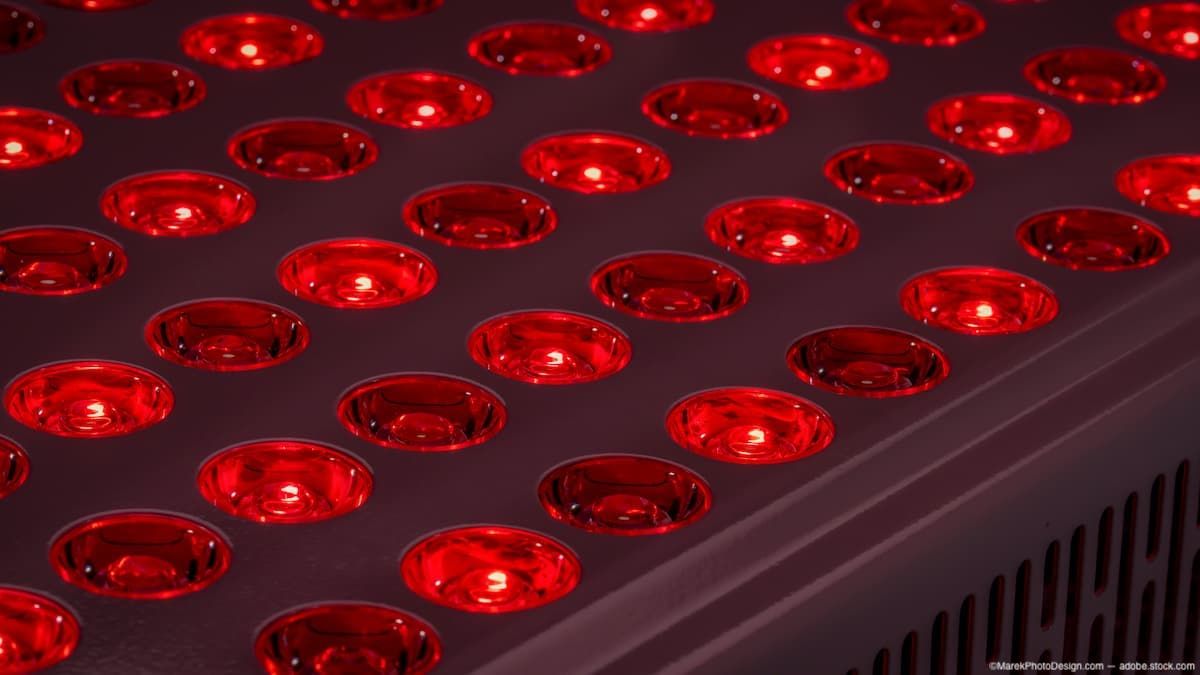Researcher: Red light myopia therapy can injure retina
A University of Houston professor found that the excitement over the results of LLR as a treatment option for patients with myopia may have come too soon, before its efficacy was confirmed.
(Image credit: AdobeStock/MarekPhotoDesign.com)

A University of Houston researcher is sounding the alarm against the use of low-level red light (LLRL) therapy as a method to control myopia, especially in children.
In recent years, LLRL has emerged as a viable myopia treatment after studies reported the treatment as effective and responsible for significant reduction in myopia progression. The company behind one of the devices reports that it is already being used to address myopia in more than 100,000 pediatric patients.1
However, the excitement over the results of LLRL as a treatment option for patients with myopia may have come too soon, before its efficacy was confirmed.2
"Based on measurements in our laboratory, it is recommended that clinicians strongly reconsider the use of LLRL therapy for myopia in children until safety standards can be confirmed,” Lisa Ostrin, OD, PhD, associate professor at the University of Houston College of Optometry, said in the university’s news release.
Ostrin explained the therapy can put the retina at risk of photochemical and thermal damage.
“The safety profiles of red-light laser devices for myopia have not been fully investigated,” she said in the UH news release.
For LLRL therapy, the young patients are instructed to look into a red light-emitting instrument for 3 minutes, 2 times a day, 5 days a week, for the duration of the treatment period, which could last years.2
“We found that the red-light instruments for myopia exceed safety limits,” said Ostrin, whose research characterizes the laser output and determines the thermal and photochemical maximum permissible exposure (MPE) of LLRL devices. “For both LLRL devices evaluated here, 3 minutes of continuous viewing approached or surpassed the luminance dose MPE, putting the retina at risk of photochemical damage.”
According to the UH news release, Ostrin looked at 2 different LLRL devices, and while both devices were confirmed to be Class-1 laser products, as defined by International Electrotechnical Commission standards, according to Ostrin they are not safe to view continuously for the required treatment duration of 3 minutes.
According to the study, Class-1 lasers are low-powered devices that are considered safe from all potential hazards when viewed accidentally and briefly. Examples of Class-1 lasers are laser printers, CD players and digital video disc (DVD) devices. Class-1 lasers are not meant to be viewed directly for extended periods.2
Two LLRL were examined. The researchers made optical power measurements using an integrating sphere radiometer through a 7-mm diameter aperture, in accordance with ANSI Z136.1-2014, sections 3.2.3-3.2.4.The researchers obtained retinal spot sizes using a model eye and high-resolution beam profiler.2
Moreover, corneal irradiance, retinal irradiance and MPE were calculated for an eye positioned at the oculars of each device, according to the study.
The researchers noted that clinicians should be cautious with the use of LLRL therapy for myopia in children until its safety standards can be confirmed.
“Thermal ocular injury from a laser can occur with exposures at any wavelength when the temperature change of the retina is greater than 10°C, resulting in the denaturation of proteins,” Ostin concluded in the UH news release. “With thermal damage, the lesion size is typically less than the size of the beam diameter, and the resultant scotomas are permanent.”
References:
1. University of Houston expert warns red light myopia therapy can injure retina. EurekAlert! Accessed January 31, 2024. https://www.eurekalert.org/news-releases/1032673
2. Ostrin LA, Schill AW. Red light instruments for myopia exceed safety limits. Ophthalmic and Physiological Optics. Published online January 5, 2024. Accessed January 31, 2024. doi: https://doi.org/10.1111/opo.13272
Newsletter
Keep your retina practice on the forefront—subscribe for expert analysis and emerging trends in retinal disease management.